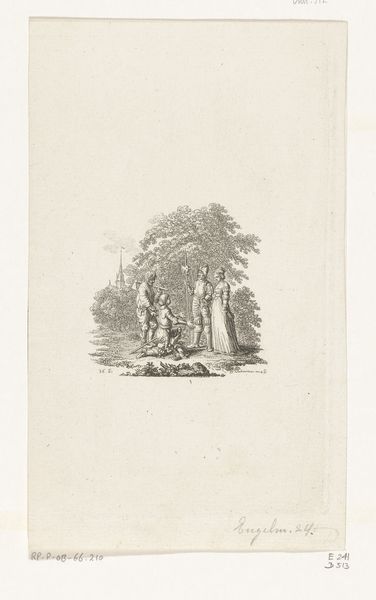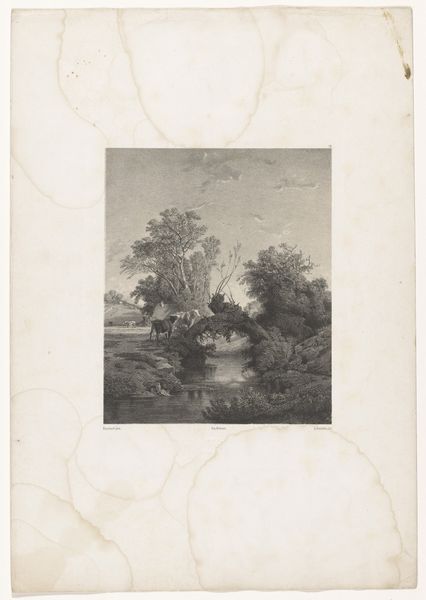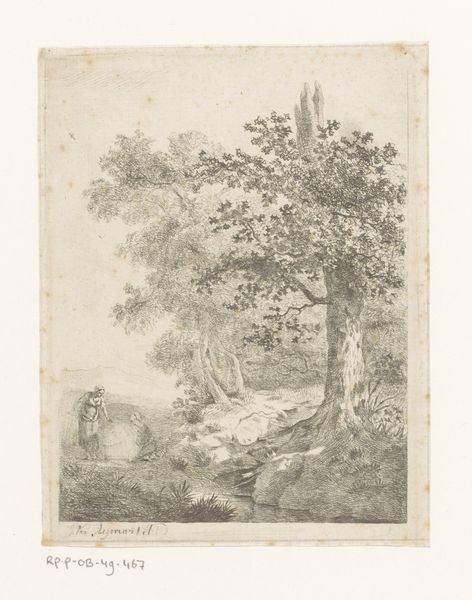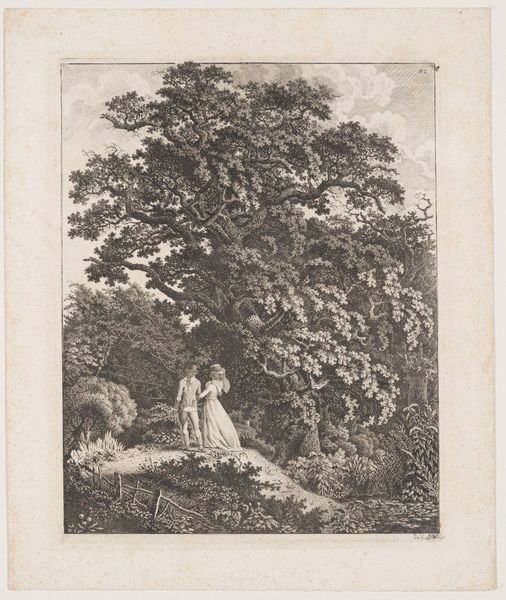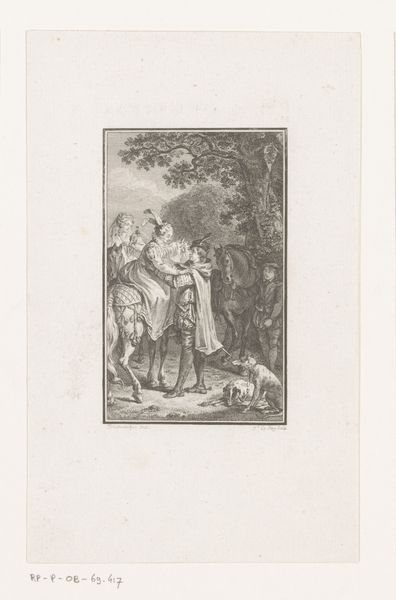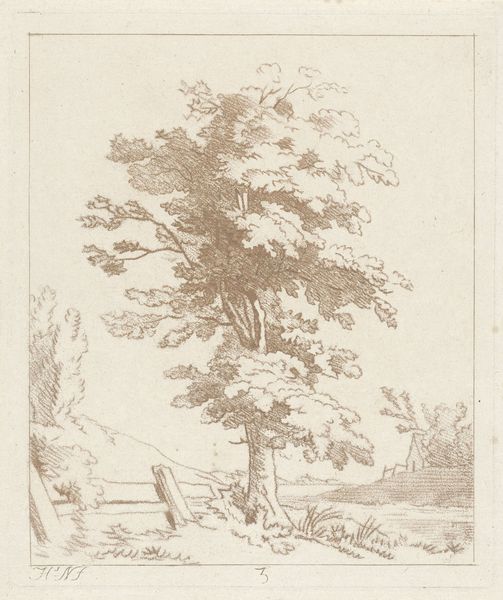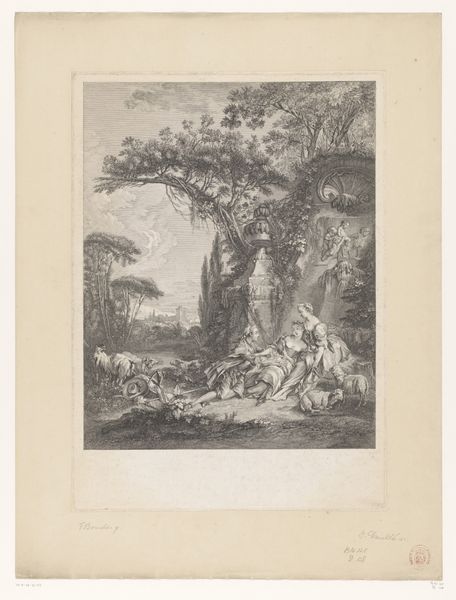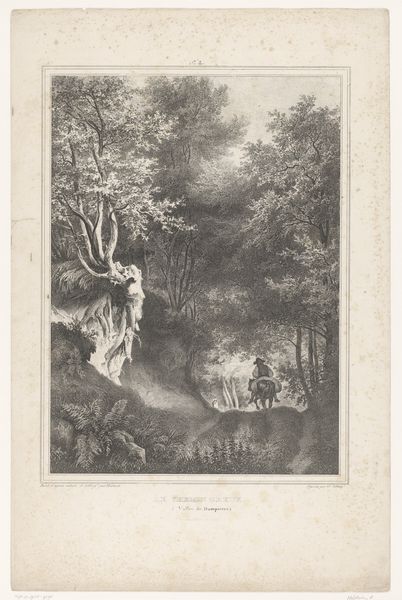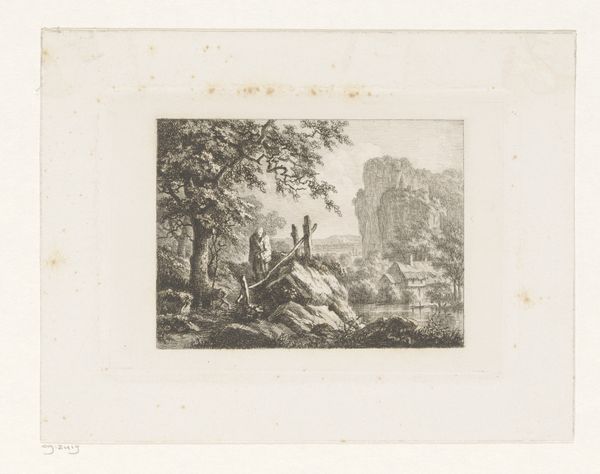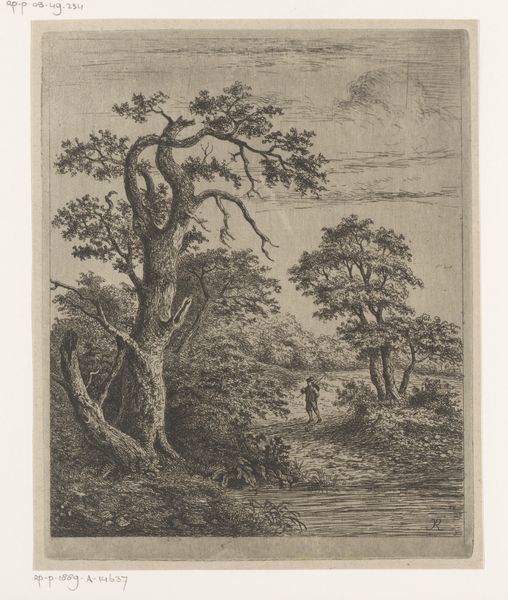
Dodelijke val van Willem III tijdens een jachtpartij, 1702 1783 - 1795
0:00
0:00
reiniervinkeles
Rijksmuseum
Dimensions: height 160 mm, width 100 mm
Copyright: Rijks Museum: Open Domain
Curator: Here we have "Dodelijke val van Willem III tijdens een jachtpartij, 1702"—or, "The Fatal Fall of William III During a Hunting Party, 1702"—an engraving by Reinier Vinkeles made between 1783 and 1795. Look closely; the detail is incredible. Editor: My initial reaction? Chaos rendered meticulously. The flurry of horses, the fallen figure, and that eerie stillness of the barren trees... It's like a frozen scream. Curator: Indeed. Vinkeles captured a pivotal historical moment: the accident that led to William III’s death. He wasn't killed in the fall itself, but the complications afterwards. It effectively ended the Dutch Stadtholderate. Editor: What interests me, though, are the very materials and production process. We're looking at an engraving—a medium of reproduction. It speaks volumes about how narratives are disseminated, particularly those tied to power and its fragility. Imagine the labour involved, the skill required to translate such a dynamic scene onto a copper plate! Curator: Precisely! And think about its reach. Prints democratized images, circulating stories and shaping public perception. It transforms what was, after all, a deeply personal event—a king’s death—into a piece of public property, doesn't it? Editor: But even as it reproduces and distributes, it still retains a haptic quality. The ink pressed onto the paper, the lines scored with such intention—you can feel the artist’s hand in its making. That contrasts rather violently with the subject—the accidental, perhaps ungainly fall of a king. Curator: There's a compelling tension, isn’t there? This very controlled, almost clinical technique rendering such a chaotic event. It brings out the stoicism of the Baroque style, too. Notice how the landscape isn’t romanticized, but serves as a stark backdrop. The event happened "here", at a real place. Editor: Yes. I am really interested in the commercial aspect too. What social status did engravers hold? What did the art market look like at the time? I wonder what price the artwork had when originally made. Was this a luxury good? It makes one think, does it not, of how art serves a larger structure of labor and capital? Curator: Absolutely. We tend to isolate artistic genius, but works like these ground us in broader realities of skill, materials, and socio-political context. Well, it has been insightful connecting both the visual narrative and tangible historical echoes embedded within the print itself! Editor: It has! Let us go investigate another artwork here.
Comments
No comments
Be the first to comment and join the conversation on the ultimate creative platform.


